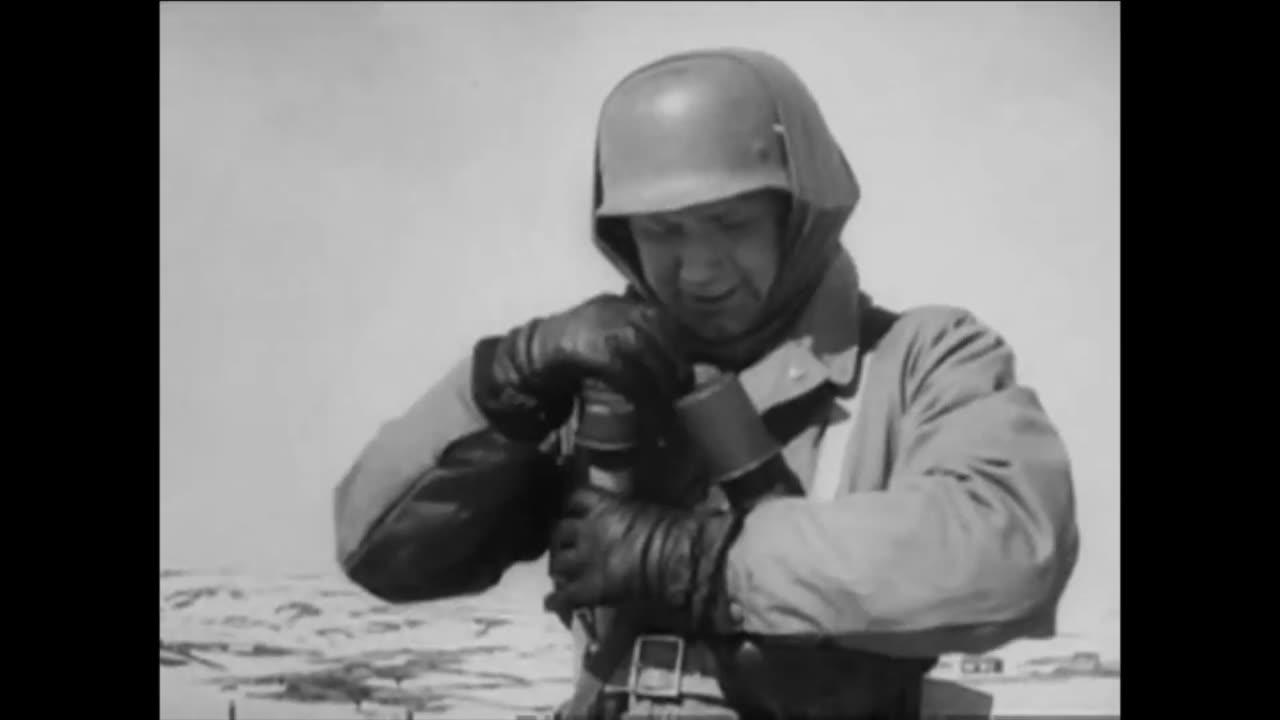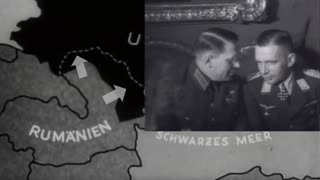Premium Only Content

Volunteer Norwegian Legion - Narvik - Lebensborn - Finnish Winter War - Josef Terboven - Waffen SS
SUPPORT THE CHANNEL
www.Patreon.com/Military1945
With the British pulling their troops out from the Norwegian theater in May of 1940 and the coming of the war against the Soviet Union, we’ll see how Nationalist Norway got involved in an uncomfortable slow-dance with their occupiers which made the creation of the volunteer Norwegian Legion possible. We’ll take a look at the well balanced propaganda campaign used to fine volunteers and get financial support from the general Norwegian public. Finally we’ll follow the unit as it musters for the first time and begins to train in preparation for its active duty in 1942.
During the invasion of Denmark and Norway in 1940, Operation Weserübung, the horrors of the Polish campaign had not been experienced by the Scandinavian populations. Although the fighting lasted for 62 days, most of the combat took place away from the cities and there had been no significant bombing campaign, which left the general population largely unaffected. This footage is of German Fallschirmjäger, paratroopers, in an operation around Narvik a largely rural area situated far to the north. With the British pulling out for geopolitical reasons, namely the battle in France coming to a head, rather than being soundly defeated militarily there there was a lingering question as to whether they’d been abandoned..
As the German authority settled in, the soft policies associated to the country’s occupation were intentionally lenient and cooperative in nature. Unlike in most occupied countries German soldiers were encouraged to fraternize with the locals. 8 SS-administered so-called Lebensborn homes were set up in Norway which took care of thousands of children born from relationships between Norwegian women and German soldiers.
Through 1940 and into 1941 news about the German military’s Blitzkrieg victories continued streaming in. As shown in this footage the presentation of captured enemy weaponry was popular, especially among the youth, and reinforced the idea of German military superiority. In addition, impressive military parades were regularly organized in the cities. There was an understandably large portion of the Norwegian population that believed the current situation was long-term or even permanent.
Even the Norwegian government in exile in Britain was itself ambiguous about what they expected of their compatriots. In a speech by Norwegian Minister of Justice Terje Wold, broadcast by the BBC for listeners in German-occupied Norway it was declared that while the enemy holds power in the country, Norwegian public servants must endure a certain connection with the German authorities. But that a Norwegian public servant must never let himself be used as a tool by the German regime. That complicated relationship was left to the interpretation of each individual.
Ever since the Russo-Finnish Winter War of 1939-40 there was considerable mistrust of the Soviets. With the invasion of the Soviet Union there was a general feeling that Norway needed to do its part in this anti-Bolshevik crusade. On July 4 in coordination between the German occupational authorities and the Norwegian fascist National Union that was lead by the collaborationist Quisling, former Norwegian soldiers were invited to join the new volunteer Norwegian Legion. Within a week 448, or 20%, of the Norwegian army’s former officers had volunteered.
The successful recruiting campaign placed heavy emphasis on showing solidarity with Finnland. One way of doing this was by showing the two nations flags together. By portraying Germany as a comrade-in-arms, as an equal, once again a feeling of cooperation and not subservience was emphasized. The Norwegian Legion was officially part of the Waffen-SS however its commanding officers were to be Norwegian, the language spoken would be Norwegian, they were promised Norwegian uniforms, and their region of operation would supposedly of a defensive nature in Finnland. Everything pointed towards the revitalization of Norway by the newly empowered and seemingly independent, Norwegian nationalists.
Those recruited to the Norwegian Legion were first sent to the Bjolsen Skole camp in Norway where uniforms were issued. This is also where they got their first surprise. Rather than receiving Norwegian uniforms as promise the Legionnaires received standard German SS uniforms. The only difference was the Norwegian national flag sleeve patch.
To what extent the young soldiers could comprehend the significance of this sleight of hand is difficult to say. Had some innocent sounding supply snafu been used as an excuse? The unit was already officially incorporated into the SS hierarchy which put the soldiers ultimately under the direct command of the Reichsführer Heinrich Himmler. But this outwardly evident symbolic association was also meaningful.
The official motto of Himmler’s SS was Meine Ehre heisst Treue, or Loyalty is my honor. The question of course was - loyalty to whom and for what?
-
 9:16
9:16
Military1945
27 days agoRomanian 4th Army Odessa - Ion Antonescu - Bessarabia and Northern Bukovina - Molotov-Ribbentrop
861 -
 LIVE
LIVE
LFA TV
14 hours agoLFA TV - ALL DAY LIVE STREAM 4/16/25
3,767 watching -
 LIVE
LIVE
Caleb Hammer
55 minutes agoI Wasn't Expecting This... Transition… | Financial Audit
86 watching -
 LIVE
LIVE
Bannons War Room
1 month agoWarRoom Live
16,324 watching -
 1:56:07
1:56:07
Matt Kohrs
12 hours agoStocks Fall, Breaking Market News & Live Trading $1M || The MK Show
72.9K3 -
 LIVE
LIVE
The Big Mig™
4 hours agoIt’s Time To Pay The Piper Letitia James!
4,694 watching -
 33:37
33:37
Stephen Gardner
15 hours ago🔥Trump's LATEST legal NIGHTMARE explained by Alan Dershowitz!
30.9K52 -
 LIVE
LIVE
Badlands Media
8 hours agoBadlands Daily: April 16, 2025
5,141 watching -
 58:41
58:41
Randi Hipper
2 hours agoCRYPTO WINTER IS BACK? BITCOIN MAJOR LEVEL TO WATCH
34.5K -
 LIVE
LIVE
Wendy Bell Radio
7 hours agoDemocrats Are Making The Icing For Their Midterm Slaughter Cake
8,443 watching